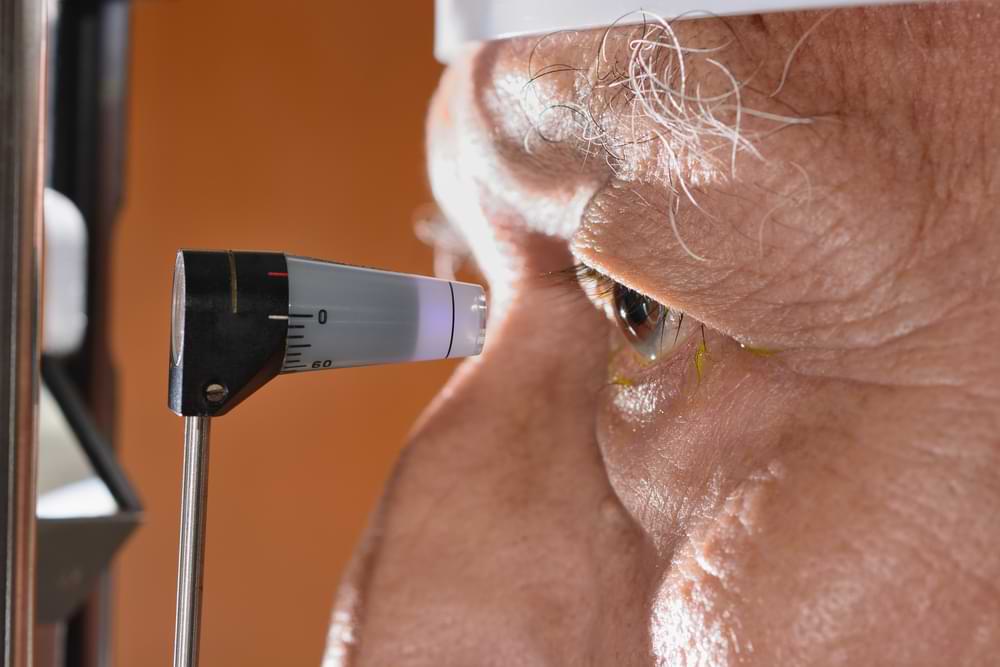Understanding Glaucoma Treatment in Melbourne

Glaucoma, often unseen until it’s too late, is a major cause of vision loss, affecting many without warning. About half the people in our community who have glaucoma, don’t even know they have it!
I’m Minh Van Tran from VisionPro, where our mission goes beyond just eye exams. We work hard to secure your overall eye health through personalized care and advanced glaucoma treatment in Melbourne.
One story that stands out for me involved a patient, a 53 year old lady, who came in just in time. She hadn’t noticed much beyond mild discomfort, but our comprehensive check-up revealed early-stage glaucoma. Through prompt and tailored treatment, we managed to preserve her sight. This case, among many others, highlights the silent threat glaucoma poses and the power of proactive eye care.
Ignoring or delaying treatment for glaucoma symptoms is a gamble with your vision. Early intervention is key to managing the condition effectively. If it’s been a while since your last eye exam, or if you’re concerned about glaucoma, reach out to us at VisionPro. Let’s ensure your vision is protected for years to come.
To learn more about glaucoma treatment at our St. Albans or Footscray practices in Melbourne, keep reading.
What is Glaucoma?
Glaucoma is often termed as “the silent thief of sight”, primarily because it affects the optic nerve responsible for vision without early noticeable symptoms. This condition is characterized by increased intraocular pressure, which, if left unchecked, can cause irreversible damage. It’s crucial for maintaining the connection between the eye and the brain, transmitting visual information that allows us to see.
There are primarily two types of glaucoma: open-angle and angle-closure.
- Open-angle glaucoma, prevalent and insidious, gradually elevates intraocular pressure, damaging the optic nerve over years without early symptoms, leading to unnoticed vision impairment until substantial loss is evident.
- Angle-closure glaucoma, rarer and urgent, involves a sudden, complete blockage of eye drainage canals, causing rapid pressure increase and acute symptoms, necessitating immediate treatment to prevent irreversible vision damage.
Understanding intraocular pressure (IOP) is central to grasping how glaucoma affects the eye. Elevated IOP is a significant risk factor for developing glaucoma, leading to optic neuropathy—damage to the optic nerve.

Glaucoma Treatment Options in Melbourne
Current glaucoma treatments focus on reducing intraocular pressure to prevent further optic nerve damage.
Eye drops and oral pills form the foundation of glaucoma treatment, aimed at lowering intraocular pressure to prevent optic nerve damage. Eye drops work by either reducing fluid production in the eye or increasing fluid outflow, while oral medications are typically used when eye drops are insufficient. These treatments require consistent use and adherence to the prescribed regimen to effectively manage the condition.
Laser surgery and minimally invasive glaucoma surgeries (MIGS) represent advanced treatments for glaucoma, focusing on reducing intraocular pressure with minimal tissue disruption. Laser surgeries, such as trabeculoplasty, improve fluid drainage, while MIGS offer an alternative with fewer complications and quicker recovery times. These approaches provide effective options for managing glaucoma, particularly for patients where medication alone does not suffice, illustrating the progress in surgical techniques aimed at preserving vision with less risk. VisionPro can refer you to an ophthalmologist if eye surgery is required.
Reducing Risk of Glaucoma
You should take note of the following advice to reduce your possibilities of developing glaucoma.
- Get comprehensive dilated eye exams regularly. This becomes especially important if you are in a “high risk” group. These exams allow eye care professionals to inspect the back of the eye for early signs of the disease, which can be critical for preventing significant vision loss.
- Start eye exams by age 40 to catch glaucoma early. This age marks a point where the risk starts to increase, and catching glaucoma early can lead to more effective management and a better prognosis. Early detection allows for timely intervention, potentially slowing or even halting the progression of the disease.
- Discuss family health history, as glaucoma can be hereditary. If you have relatives who have been diagnosed with glaucoma, you might be at a higher risk of developing the condition yourself. Researching and sharing this information can prompt more tailored and frequent monitoring, ensuring that any signs of glaucoma are caught as early as possible.
- Maintain a healthy weight and blood pressure. Both factors are linked to increased eye pressure, a significant risk factor for the disease. High blood pressure can affect the blood flow to the optic nerve, while obesity may increase intraocular pressure.
- Avoid smoking to reduce overall vision loss risk. Smoking contributes to oxidative stress and vascular problems, which can affect eye health.
Consistently following your treatment plan, including using eye drops as directed and attending regular follow-up appointments is key to making glaucoma manageable, and preserving quality of life.
Factors that can put you into a glaucoma “high risk” group include:
- Being of African or Asian descent
- High degree of long or short sightedness
- Serious eye injury
- Diabetes
- A prolonged course of steroid medication.
FAQ About Glaucoma Treatment in Melbourne
What are the first signs that glaucoma is developing?
Glaucoma typically progresses without obvious symptoms in its early stages, making it particularly dangerous. However, some early signs might hint at its development, especially in the less common form known as acute angle-closure glaucoma. These signs can include:
- Sudden onset of visual disturbance, especially in low light conditions.
- Blurred vision that comes and goes.
- Halos around lights, particularly noticeable at night.
- Mild eye pain or discomfort.
- Redness of the eye.
- Headaches or pain around the brow area.
For the more common type, open-angle glaucoma, noticeable symptoms often don’t appear until significant vision loss has occurred.
Can glaucoma be cured?
Currently, there is no cure for glaucoma. Treatment focuses on lowering eye pressure to prevent further optic nerve damage and vision loss. This can be achieved through medications (eye drops), laser treatments, or surgery, depending on the severity and type of glaucoma. Early detection and ongoing management are crucial to preserving vision and preventing progression.
What is the main cause of glaucoma?
The main cause of glaucoma is damage to the optic nerve, often associated with elevated pressure in the eye (intraocular pressure or IOP). This pressure buildup can occur when the eye’s fluid (aqueous humor) doesn’t drain properly. While high eye pressure is a significant risk factor, glaucoma can also occur with normal eye pressure, suggesting other factors like poor blood flow to the optic nerve or high blood pressure may play roles.
What is first stage glaucoma?
First stage glaucoma, or early-stage glaucoma, refers to the initial phase of the disease when optic nerve damage and visual field loss are minimal. Many people in this stage experience no symptoms, which is why glaucoma can be so challenging to detect early without regular eye exams.
How long can you live with glaucoma before going blind?
Glaucoma is a condition that usually gets worse very slowly. On average, if it’s not treated, glaucoma can move from causing a little bit of damage to making someone completely blind over a period of about 10 to 15 years. How quickly this happens depends a lot on the pressure inside your eye, which doctors call intraocular pressure or IOP for short. If the pressure is between 21 and 25 mmHg (a way to measure this pressure), it might take about 15 years for glaucoma to really affect your sight. If the pressure is a bit higher, between 25 and 30 mmHg, it could take around seven years. And if the pressure is over 30 mmHg, it might only take about three years.
Does glaucoma run in the family?
Yes, glaucoma can be hereditary, and having a family history of glaucoma is a well-established risk factor for the disease. Individuals with a parent or sibling diagnosed with glaucoma have a higher chance of developing it themselves compared to those without a family history of the condition.
Specific genetic links have been identified in some forms of glaucoma, such as primary open-angle glaucoma, the most common type. Research continues to uncover genetic factors that contribute to the risk and progression of the disease, suggesting that multiple genes are likely involved.
Conclusion
Early and regular eye testing for glaucoma is vital. These exams are pivotal in allowing us at VisionPro to catch glaucoma in its nascent stages, and allowing for interventions that can significantly slow its progression.
For those at risk, making suitable lifestyle adjustments can make a big difference. In particular, maintaining a healthy weight, blood pressure and not smoking can improve your odds of avoiding the condition.
I encourage anyone who is concerned about glaucoma treatment in Melbourne or who is overdue for an eye examination to schedule an appointment today. Prioritizing eye health is crucial, and VisionPro is here to support you every step of the way.
Scheduling an eye exam appointment is the first step to restoring or maintaining quality of life.
Click on the “BOOK AN APPOINTMENT” button OR call either our St. Albans (03) 9364 5509 or Footscray (03) 9687 8787 optometry practices.

Minh gained his Bachelor of Optometry in 2000, and his Certificate in Ocular Therapeutics (ACO) in 2016.
He started VisionPro Optometrists in 2008 and has been Principal Optometrist ever since, working in both the Footscray and the St Albans practices.
Minh is a member of Optometrist Association Australia and the ACO. He always strives to achieve the highest standard of professionalism when delivering eyecare to all his patients.
Minh’s special areas of interest include ocular diseases and management, children’s vision and contact lens fitting. Minh enjoys travelling and reading in his spare time.
